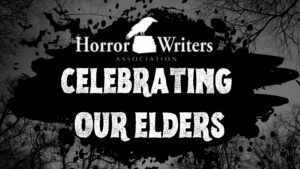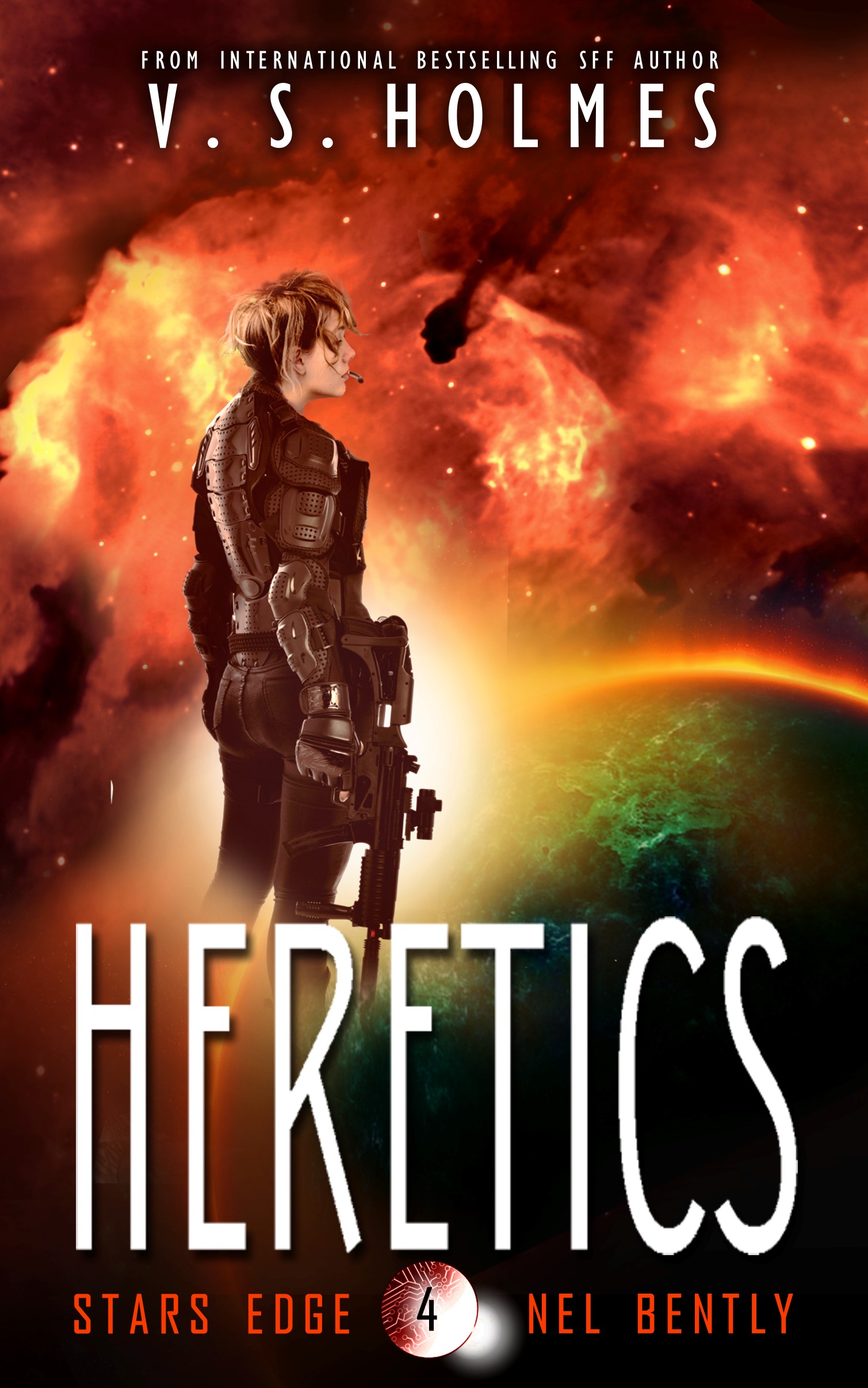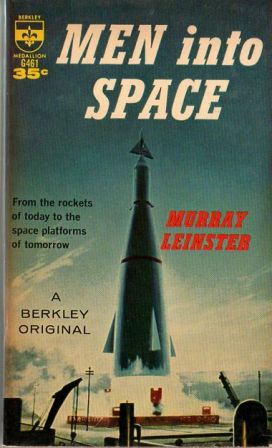(1) GENRE SUPPORT FOR WGA STRIKE. “SFWA Stands in Solidarity with the WGA” the organization announced today.
The Science Fiction and Fantasy Writers Association supports writers. As such, SFWA stands in solidarity with the Writers Guild of America (WGA) in their strike. Emblematic of that support was our Nebula Awards Ceremony team working to ensure that the script for the ceremony was complete before the strike began so we would not violate the picket line.
During this time, we would like to caution writers who are offered meetings for TV or movie work that such seemingly innocuous meetings may affect their eligibility to join the WGA in the future. For more information, see WGA’s Strike Rules.
We hope this strike will come to a swift conclusion with writers’ voices and concerns heard and met with reasonable terms.
(2) RINGS POWERS ON WITHOUT SHOWRUNNERS. [Item by Mike Kennedy.] Due to the Writers Guild of America strike, season 2 of The Lord of the Rings: The Rings of Power will be finishing its last few weeks of filming without their showrunners. The production company had arranged to have all scriptwriting finished ahead of the strike.
What they’ll do if somebody decides a rewrite is necessary hasn’t been announced. Executive producers, directors, and other crew who are not WGA members will be overseeing all on-set work. “The Rings of Power to complete season 2 filming without showrunners amid writers’ strike” in Entertainment Weekly.
The Lord of the Rings: The Rings of Power is moving forward with filming season 2 — despite the ongoing Hollywood writers’ strike.
Amazon Studios‘ fantasy epic is currently in production on its second season, and EW has confirmed that filming will continue in the U.K. without showrunners J.D. Payne and Patrick McKay. The production team planned for a potential strike, and scripts and other creative materials were finished ahead of time so as not to delay filming. Rings of Power has 19 days left to shoot for season 2.
The Writers Guild of America went on strike this week after failing to reach an agreement with the Alliance of Motion Pictures and Television Producers. Under strike rules, WGA members are prohibited from participating in writing duties. In Payne and McKay’s absence, non-writing executive producers, directors, and crew will oversee production on set….
(3) CLASS IS IN SESSION. Madeline Shier lists books about 21 magical institutions of learning in “There’s Magic in All of Us: Choosing the Right Magic School for You” at Powell’s Books.
There comes a point in every young person’s life where they need to make an important decision: where will they go to study magic?
While excellent students from a variety of academies and programs have been sharing their experiences for years — Ged’s adventures at The School of Wizardry on Roke Island in A Wizard of Earthsea (1968), Cat Chant’s training at Chrestomanci Castle in Charmed Life (1977), etc. — it’s impossible to deny that a particular institution has dominated the conversation for the last twenty-six years. But as news continues to break regarding the outrageous transphobia, antisemitism, and racism propagated by that academy and its founder, more and more students who’d previously anticipated immediately accepting their invitation to an ancient castle in Scotland are finding themselves considering alternative courses for their magical education.
(This is not to say that one person’s cruelty, even its founder’s, can wipe away all merit from an institution. You may still wish to take a tour of the campus there, and that is of course your prerogative. You will likely find much to love; this writer certainly does. I would simply also urge you to consider your surroundings as you pass through. If you, like me, find yourself put off by the tokenization of your non-white, non-straight peers, and by the mistreatment of entire groups of sentient beings, it is simply good to remember that these hallowed halls are not our only option.)
Hereafter, you will find a catalog of academic options to weigh as you plan your studies. Certain programs — such as the much-lauded training offered by Camp Half-Blood and its sibling organizations, or the prestigious School for Good and Evil — are undoubtedly already on your radar and have therefore been omitted, though we highly recommend you consider them as well.
(4) AH, ROMANCE. Allison Brennan explains the art of “Crafting Will They or Won’t They Tension in Thrillers” at CrimeReads.
…The key in any long-running suspense series is to ensure that conflicts are authentic and true to the characters. Contrived conflict where “if only they talked” or throwing in a spontaneous disappearance with no lead-up and definitely no satisfying conclusion will disappoint readers….
(5) KOONTZ LIVES IN FEAR. [Item by Olav Rokne.] Dean Koontz has written more than 110 novels, lives like a prince and is riddled with self-doubt. In a long form profile of the multi-genre author, the Washington Post seems to imply his fear based stories are his most personal. “What scares master of suspense Dean Koontz? Plenty.” according to the Washington Post.
(6) EATING THE FANTASTIC. Scott Edelman invites listeners to feast on fish and chips with the prolific Robert Jeschonek in Episode 197 of the Eating the Fantastic podcast.

I met this episode’s guest, Robert Jeschonek, when I attended the Steve Ditko Mini-Con in Johnstown, PA in September of 2021, While there, I spontaneously decided late in the afternoon to wander the exhibit tables to capture the voices of four other attendees, getting them to share anecdotes about that legendary creator, and you can hear them in Episode 154. But Jeschonek, who’d recently completed a biography of Ditko with the family’s cooperation, had taken off before I could get to him. We agreed we’d someday catch up to chat, and that someday is now.
There’s so much else to talk about with Bob in addition to Steve Ditko, though. For one thing, he’s managed to have stories published in every issue so far of the revived Pulphouse — all 20 of them! (Me, I’ve only had two published there.) His short stories have also appeared in Clarkesworld, Galaxy’s Edge, Fiction River, Pulp Literature, StarShipSofa, and many other publications. He has also written official Doctor Who and Star Trek fiction plus Batman and Justice Society comics for DC. His novels include the military scifi epic Battlenaut Crucible, the urban fantasy Earthshaker, the cozy mystery Death by Polka, and the young adult thriller Unbullied. He’s won a Scribe Award from the International Association of Media Tie-In Writers, and the grand prize in Pocket Books’ Strange New Worlds contest.
We discussed why when he a kid growing up in Johnstown, Pennsylvania, he dismissed any suggestion Steve Ditko grew up there as mere rumor, the differences in the way we each pants our stories, how to get writing done amid the pressures of life, the best way to approach assembling collections and anthologies, how he got his first gig writing comic books, dealing with the inevitable rejections, whether his fans follow his writing career cross his many genres, the many misconceptions people have about Steve Ditko, and much more.
(7) SZE SAYS. The New York Times profile “Sarah Sze Wishes She Could Hear Gertrude Stein Pick a Fight” includes these shout-outs to sff.
What’s your favorite book no one else has heard of?
“Flowers for Algernon,” by Daniel Keyes, was an influential book for me when I was growing up, and I’ve found that few people seem to have read it. It’s written in an epistolary style, and I was taken by how the writing itself uses spelling, grammar, punctuation and diction to indicate the rise and loss of the fictive author’s cognitive skills, reflecting the story line. I’m still struck with the novel’s opening epigraph from Plato, taken from Book 7 of “The Republic”: “Any one who has common sense will remember that the bewilderments of the eye are of two kinds, and arise from two causes, either from coming out of the light or from going into the light, which is true of the mind’s eye, quite as much as of the bodily eye.”
What book might people be surprised to find on your shelves?
“Slaughterhouse-Five,” by Kurt Vonnegut, “Fahrenheit 451,” by Ray Bradbury, “1984,” by George Orwell, “Survival in Auschwitz,” by Primo Levi.
(8) MEMORY LANE.
1969 – [Compiled by Cat Eldridge.]
John Boyd’s The Rakehells of Heaven was published by Weybright and Talley in the States fifty-four years ago. It was not his first novel, which was The Last Starship from Earth. SFE loved that novel but was not impressed but any of the twelve that followed: “None of Boyd’s subsequent novels – some of which are abundantly inventive – made anything like the impression of this first effort, though they are not inconsiderable.”
(The Dictionary of Literary Biography says Robert A. Heinlein endorsed The Last Starship from Earth highly. No word on what he thought of this novel.)
If you’ve not read him, be advised that The Last Starship from Earth is not available from the usual suspects but this novel is as Andromeda Gun (excellent) and The Girl with the Jade Green Eyes (weird, and very entertaining). That is it.
So let’s have the Beginning…
Astronauts hold few charms for psychiatrists.
With Their “Rogers” and their “Wilcos” and their “A-Okays,” the eagle scouts of the Space Navy are all typical American boys who like girls and would rather go bowling than read a book. No matter if the astronaut comes from Basutoland, black and fuzzy-haired, he’s still an all-American boy.
Malfunctions of the ego are as rare among the breed as roses on Mars, or so I thought when I came to Mandan. And so I continued to think until I debriefed Ensign John Adams after his unscheduled touchdown at the Mandan Pad. In John Adams, I found the psychiatric equivalent of an orchid blooming on Jupiter.
As a psychiatrist of Plato’s school, I would have never volunteered for duty at the Mandan Naval Academy. Platonists are sculptors of the psyche who hold that sanity is innate in man’s mind. Our tools are rhetoric, insight, empathy and, above all, the question, for wise interrogation is the better part of therapy. Our marble is mined from the loony bins of Earth. Yet, with Bellevue Hospital but a few blocks from where I was graduated, the bureaucracy ordered me to intern at the North Dakota space complex “to broaden my technical knowledge.”
I got to Mandan in late September, a week before school opened, during the point of impact called autumn when winter kicks summer off the Northern Plains. I reported to Space Surgeon Commander Harkness, USN (MC), commandant of the infirmary staff. Doctor Harkness, or Commander, as he preferred to be called, was a neurosurgeon, which is a fancy name for a brain mechanic who uses laser drills and saws. Harkness made no attempt to suppress his hostility toward interns in general and psychiatrists in particular. He assigned me to interview incoming midshipmen who had already been Rorschached from Johannesburg to Juneau. It was salt-mine work. Any behavioral psychologist could have handled it, but it implemented Harkness’s policy of making interns sweat.
In my first three weeks, I interviewed over two hundred yearlings and found only one whose behavior was suspect, an earlobe-puller from Shanghai. His ear-pulling suggested a compulsion neurosis that can be dangerous in space—such boys start counting stars when they should be tending the helm. I offered my Chinese ear-puller to Harkness to demonstrate my application to duty. Harkness felt the lad’s earlobe, found a pimple which had irritated it and gave me a dressing down. “One thing we don’t do at Mandan, Doctor, is stumble over facts to get at a theory.”
Actually, Harkness’s ridicule was my high point at Mandan until Adams touched down in late December. Curse me for a masochist, but any emotion that colored that wasteland of psychiatrists was welcome. I chewed my hostility like a betel nut.
It was 5: 45 P.M., Wednesday, December 28. I had the medical watch in the infirmary when Harkness called. “Doctor, are you the only psychiatrist aboard?”
“Yes, sir,” I answered, “and will be during the holidays.”

(9) TODAY’S BIRTHDAYS.
[Compiled by Cat Eldridge.]
- Born May 5, 1890 — Christopher Morley. English writer who’d be here for Where The Blue Begins with its New York City inhabited solely by canines, but who also wrote The Haunted Bookstore which is at least genre adjacent depending on how you view it, and lovingly-crafted Sherlock Holmes and Dr. Watson: A Textbook of Friendship, his look at the writings of Arthur Conan Doyle. (Died 1957.)
- Born May 5, 1922 — Joseph Stefano. Screenwriter who adapted Bloch’s novel as the script for Hitchcock’s Psycho. He was also a producer for the first season of Outer Limits and wrote a total of twelve episodes. He also the screenwriter for the very horrifying Eye of The Cat. He wrote Next Generation’s “Skin of Evil” episode. And he was producer on the original Swamp Thing. (Died 2006.)
- Born May 5, 1944 — John Rhys-Davies, 79. He’s known for his portrayal of Gimli and the voice of Treebeard in the Lord of the Rings trilogy, General Leonid Pushkin in The Living Daylights, King Richard I in Robin of Sherwood, Professor Maximillian Arturo in Sliders, a most excellent Hades in the animated Justice League Unlimted series, Hades in Justice League and Sallah in the Indiana Jones films. Oh, and voicing Macbeth in the exemplary Gargoyles animated series too.
- Born May 5, 1942 — Lee Killough, 81. Author of two series, the Brill and Maxwell series which I read a very long time ago and remember immensely enjoying, and the Bloodwalk series which doesn’t ring even a faint bell. I see she’s written a number of stand-alone novels as well – who’s read deeply of her? Her only Hugo nomination was at Aussiecon Two for her short story, “Symphony for a Lost Traveler”. And in the early Eighties, she wrote an interesting essay called “Checking On Culture: A Checklist for Culture Building”. Who’s read it?
- Born May 5, 1943 — Michael Palin, 80. Monty Python of course. I’ll single him out for writing Monty Python’s The Meaning of Life and co-writing Time Bandits with Terry Gilliam. Though decidedly not genre, he was in A Fish Called Wanda for which he won the BAFTA Award for Best Actor in a Supporting Role.
- Born May 5, 1957 — Richard E. Grant, 66. He first shows up in our world as Giles Redferne in Warlock, before going on to be Jack Seward in Bram Stoker’s Dracula. On a lighter note, he’s Frederick Sackville-Bagg in The Little Vampire, and the voice of Lord Barkis Bittern in Corpse Bride. He breaks into the MCU as Xander Rice in Logan, and the Star Wars universe by being Allegiant General Enric Pryde in Star Wars: The Rise of Skywalker. Now I had forgotten that he’s in the Whoverse twice, once seriously and once very not. The first appearance was the latter as he in Doctor Who and the Curse of Fatal Death as The Conceited Doctor. And then he plays the Great Intelligence in three episodes of Doctor Who.
- Born May 5, 1961 — Janet Brennan Croft, 62. She’s published any number of works on library science, but her research on Tolkien includes the Mythopoeic Scholarship Award for Inkling Studies-winning War and the works of J.R.R. Tolkien, Tolkien on Film: Essays on Peter Jackson’s The Lord of the Rings, Tolkien and Shakespeare: Essays on Shared Themes and Language and Perilous and Fair: Women in the Works and Life of J. R. R. Tolkien. I’d also like to single her work, Baptism of Fire: The Birth of the Modern British Fantastic in World War
- Born May 5, 1979 — Catherynne M. Valente, 44. The last thing I read by her was The Refrigerator Monologues which is a lot of fun. Space Opera is in by TBR pile and I’d like to know what y’all thought of it. My favorite work by her? Oh, by far that’d be the two volumes of The Orphan’s Tales which I go back to fairly often — stunning writing. If you’ve not read them yet, here’s her telling “The Tea Maid And The Tailor” as excerpted from In the Night Garden which is from Green Man.
(10) BID ON TV HISTORY. Collector James Comisar will be auctioning items from his TV memorabilia collection on June 2-4. His passion for collecting is described in “The James Comisar Show”. Several historic genre TV items (I Dream of Jeanie, Star Trek, Batman)are discussed in “The History of TV in 22 Lots”.
…In time, Comisar amassed decades’ worth of sets, props and costumes spanning the medium’s birth to its Golden Age to the era of Peak TV – from Howdy Doody to Gunsmoke, I Love Lucy to Star Trek, Bewitched to I Dream of Jeannie, The Office to E.R., The Sopranos to Mad Men to Breaking Bad. And everything in between: Johnny Carson’s and David Letterman’s talk-show sets. Archie and Edith Bunker’s living room and chairs. The bar around which the Cheers regulars shared beers and jokes. The hometown signpost from the 4077th MASH. Games from The Price Is Right.
That’s just the beginning of the beginning of an extensive and remarkable list. Comisar spent decades – and millions of dollars – gathering and preserving material and memories enough to fill the television history museum he had long dreamed of opening. If you watched it, he collected it, looked after it and loved it like a family member….
(11) KOJA Q&A. One of the Horror Writers Association’s blog post themes is “Celebrating Our Elders” – as in, “Celebrating Our Elders: Interview with Kathe Koja”.

Who were your influences as a writer when you started out and who, if anyone, continues to influence you?
My two greatest influences as a writer were Emily Bronte and Shirley Jackson, from whom I learned velocity, force, and economy. And as a kid, I read a lot of M.R. James, who will always scare me.
(12) WEN WEN YANG TAKES QUESTIONS. Another HWA theme is illustrated by this post: “Asian Heritage in Horror: Interview with Wen Wen Yang”.

What about the horror genre drew you to it?
It was a lot easier to approach horror as a writer than as a consumer, because I control how bad things get. Evil will be defeated in a satisfying ending. I get nightmares very easily so I don’t consume horror as much as others do. My body horror flash fiction in If There’s Anyone Left: Volume 3 was directly from a nightmare I had after Texas’ recent attacks on reproductive rights.
(13) CALL FOR PAPERS. Science Fiction Film and Television is planning a special issue and is looking for scholarly contributions. The theme is: “The Dark Fantastic by Ebony Elizabeth Thomas: Black Girl Protagonists in Science Fiction TV and Film.”
Ebony Elizabeth Thomas’s pathbreaking book The Dark Fantastic (2019) has given new direction to debates about race, gender, and power in fantastic fiction. In her work, Thomas charts the Dark Fantastic Cycle, a pattern that consists of Black female characters moving through a sequence that includes the following: (1) spectacle, (2) hesitation, (3) violence, (4) haunting, and (5) emancipation. In examining this cycle, she posits that the Dark Other is a foundational presence in fantastic storyworlds, where desirable qualities are explicitly associated with whiteness and Blackness is consistently associated with “the monstrous Thing that is the root cause of hesitation, ambivalence, and the uncanny.”
At the same time, Thomas voices a powerful call to “re-story” fantastic storyworlds in ways that release captive characters from the cycle of the Dark Fantastic, allowing for more participatory, and more imaginative stories and worlds—as many Afrofururist and Black fantasy storytellers have been doing across media.
Thomas’s interdisciplinary approach to the “imagination gap” that has afflicted fantastic fiction gives us new ways to approach science fiction and its related genres. The editors of Science Fiction Film and Television are therefore proud to announce a forthcoming special issue dedicated to pushing Thomas’ work forward through a disruption of the Dark Fantastic Cycle with specific attention to Black girl protagonists in science fiction and film. For this issue, we have invited Drs. S. R. Toliver and Autumn A. Griffin, mentees of Dr. Thomas, as special co- guest editors, who have agreed to be centrally involved in the selection of articles and the overall organization of the special issue. We therefore invite contributions that engage meaningfully with the key concepts, methods, and proposals from The Dark Fantastic, and thereby to further the lines of thinking that Dr. Thomas has initiated in her book.
Thomas argues that “an emancipatory Black fantastic requires interrupting the dark fantastic cycle in order to create new paradigms” (p. 169).
Thus, potential questions for inquiry/interrogation include:
- How are science fiction authors (re)imagining stories about Black girls?
- How are Black girls (re)imagined in science fiction stories (e.g. See You Yesterday, Fast Color, Black Lightning, Titans)?
- How do Black women science fiction television and filmmakers (re)frame and (re)center Black girls’ racialized and gendered identities (e.g., A Wrinkle in Time, Brown Girl Begins, Naomi, Lovecraft Country, Pumzi)?
- How are Black women creators narrating themselves into existence in science fiction film and television?
In what ways do Black women and girl science fiction fans (books, film, and TV) engage with/in fandom?
Timeline
- May 31, 2023: Abstracts due
- June 30, 2023: Authors notified
- December 2, 2023: Drafts due to editors
- March 8, 2024: Initial feedback from editors
- June 3, 2024: Final drafts to editors to send for peer review
- Fall 2024: Special Issue Publication
Questions can be sent to the Guest Editors, Autumn Griffin & Stephanie Toliver at: [email protected]
(13) A LITTLE MORE SUB THAN ORBITAL. [Item by Mike Kennedy.] Though not as spectacular as the SpaceX Starship launch failure, a suborbital rocket recently launched by Up Aerospace also went boom early in the mission. Among more than a dozen payloads was a group of 120 small capsules with human cremains.
They were were intended to make it above the Kármán Line, sort of posthumously qualifying the decedents for their astronaut wings. In fact, one of the decedents already had their astronaut wings. Remains from NASA astronaut Philip K. Chapman were among those involved.
Fortunately, the cremains all survived the explosion and were recovered. It’s said they will be placed on a future mission. Hopefully that one will make the intended trip rather than another severely curtailed one. “Cremated Remains of NASA Astronaut Recovered After Failed Rocket Launch” at Gizmodo.
(14) TODAY’S BEST SENTENCE FROM A PRESS RELEASE. [Item by Daniel Dern.] Note, this is legit, and not a typo. (Easy to find the source by searching on the sentence).
What could possibly go wrong? (from DNA privacy to superpower origins gone wrong, cloning abuse…)
“Student toenails meanwhile were sent back to MIT for analysis in the nuclear reactor.”
(15) WHO? [Item by Mike Kennedy.] The story is behind a Chicago Tribune paywall (but available free if you have the Apple News app). If you could see the full thing, you’d see a number of illustrations to go along with the story. Perhaps the main thrust of the story is why Gygax is so unrecognized in the town where D&D was invented. “The Dungeons & Dragons game was invented in Lake Geneva. Why no statue in the town square?”
When Ed Schwinn thinks about the history of Lake Geneva, Wisconsin — and as president of the board of directors for the Geneva Lake Museum, he thinks about it quite a bit — he thinks of a summer retreat, a tourist town that has fewer than 10,000 year-round residents. He thinks of his own family living there year-round for 34 years. He thinks of his grandfather, who helped steer the Schwinn Bicycle Company into becoming a household name, buying a second home on the lakefront in the 1920s. He notes that a lot of summer families have long since become permanent residents, though “when I grew up on Lake Geneva, people with homes on the lakefront shut off the water on Labor Day, slipped a key under the mat and went home until May.”
He thinks of all those wealthy, famous names associated with the history of the town — the Schwinns, the Wrigleys, the Maytags, the Wards — then admits, “No matter how many well-known families have been coming here a century or more, I’m not sure any of us have done as much for the city of Lake Geneva as Gary Gygax.”
If the name doesn’t ring a bell, you’d be hard-pressed to learn more in Lake Geneva…
(16) VIDEO OF THE DAY. Honest Game Trailers dissects “Kirby’s Return to Dream Land Deluxe”.
There’s been a lot of remakes in 2023 like Resident Evil 4 and Dead Space with plenty more on the way, and Kurt can’t help but ask: is this a good thing?
[Thanks to Mike Kennedy, Andrew Porter, SF Concatenation’s Jonathan Cowie, Olav Rokne, Daniel Dern, John King Tarpinian, Chris Barkley, Michael Toman, and Cat Eldridge for some of these stories. Title credit belongs to File 770 contributing editor of the day Rob Thornton.]












